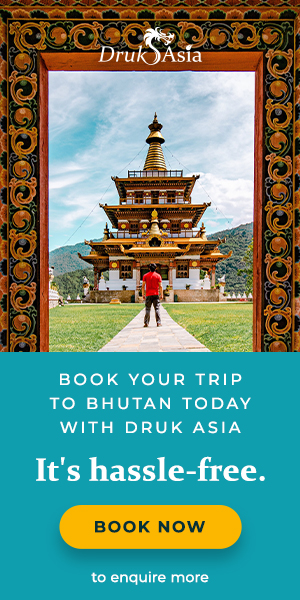A Walk Above the Clouds: Discover the Magic of Punakha’s Suspension Bridge
The Punakha Suspension Bridge, one of Bhutan’s longest, stretches gracefully over the Pho Chhu River, offering breathtaking views of lush valleys and verdant hills. A favourite among travellers, this swaying marvel not only connects nearby villages but also provides a thrilling experience amidst serene beauty.
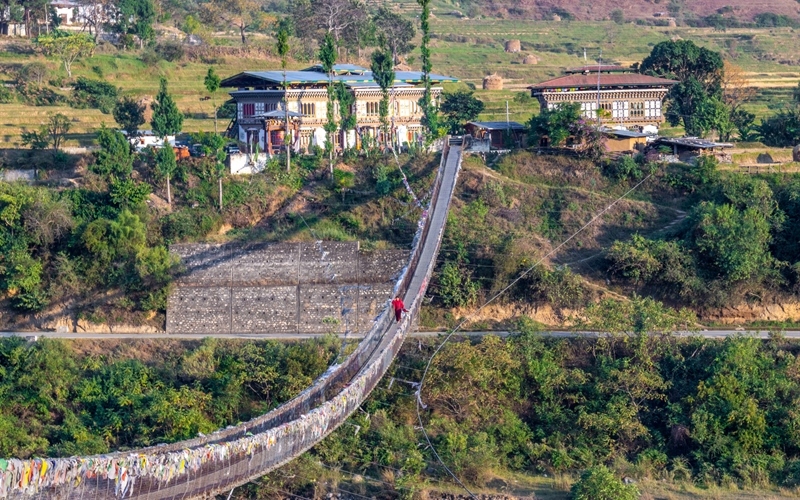
Punakha is a top destination in Bhutan, attracting both local and international tourists. Located about two hours from the capital, Thimphu, it is famous for two main attractions: Chimi Lhakhang (a temple known as the "fertility temple") and the majestic Punakha Dzong (fortress). In recent years, the country’s longest suspension bridge, just a short walk from the fortress, has also become a popular spot for visitors and locals to enjoy scenic views and adventures.
Built in 1997, the bridge connecting Chubu and Dzomi gewogs (village Blocks) in Punakha has become more than just a pathway—it’s now a popular spot for locals and tourists to stroll, take photos, and create TikTok videos.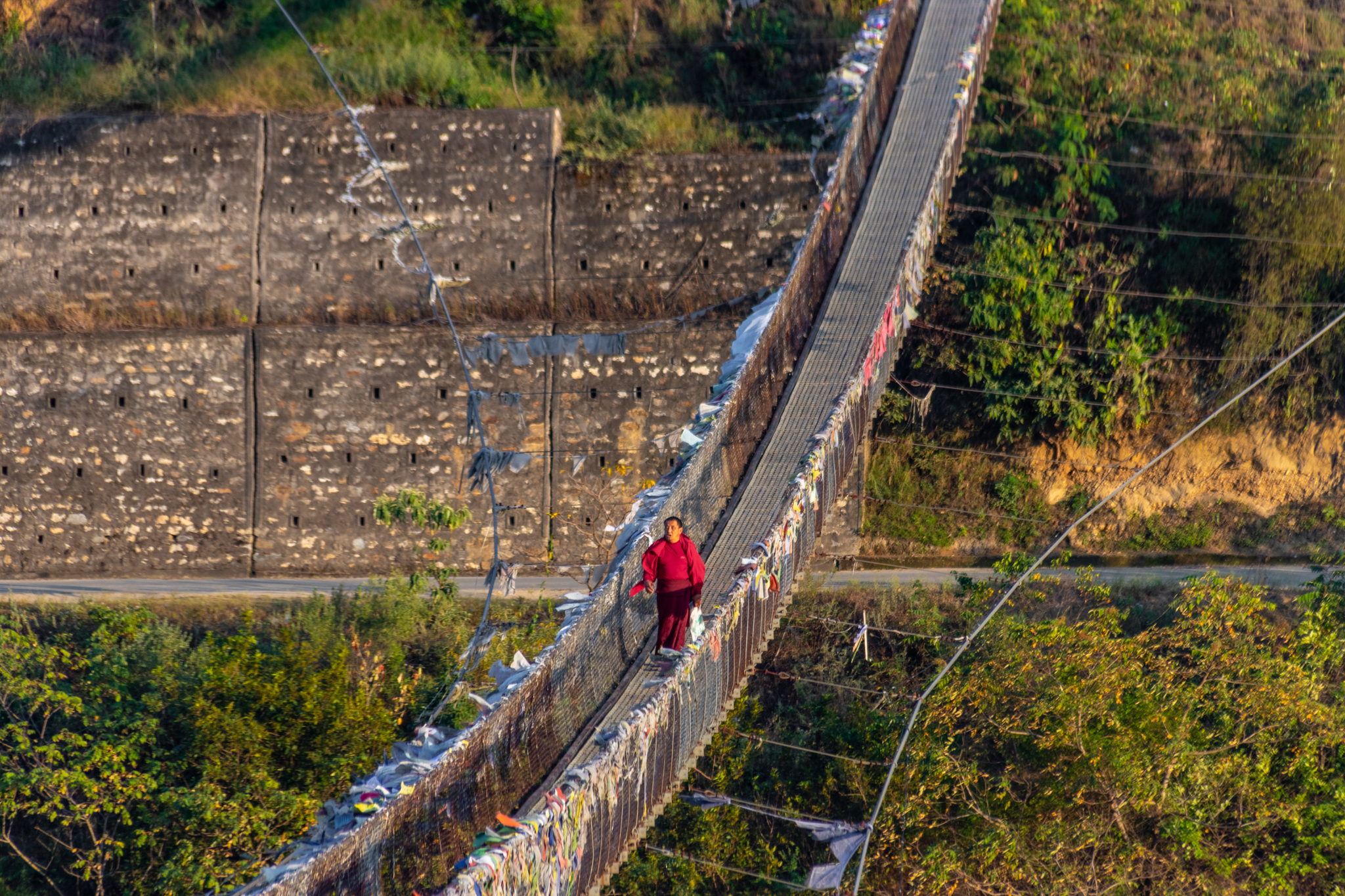
The suspension bridge, adorned with colorful prayer flags, offers breathtaking views and a unique crossing experience. Spanning the two banks of the Pho Chhu, its cables are securely anchored to cement blocks.
Panoramic Views from Punakha Suspension Bridge Bridge
Suspended about 60 meters above the Pho Chhu, the bridge stretches about 160 to 180 meters. Visitors cross it to reach Punakha Dzong, a historic fortress and monasteries on the other side of the river.
Standing on Bhutan's longest suspension bridge, one is treated to a stunning view of the Punakha Valley, often referred to as the "rice bowl" of the country. The valley is renowned for its lush, expansive paddy fields, which come to life during the summer months, creating a vibrant tapestry of green. The sight of the fields stretching across the valley floor, framed by the surrounding hills, offers a breathtaking panorama that captures the essence of Punakha's agricultural beauty. This view is a perfect blend of natural and cultivated landscapes, making it a must-see for visitors.
On the other side of the bridge, you can witness the stunning view of the majestic Punakha Dzong, with its impressive architecture standing proudly at the confluence of the Pho and Mochhu rivers. The fortress, a symbol of Bhutan's rich history and culture, offers a breathtaking sight that adds to the allure of the journey.
Renovations and Evolving Popularity
The bridge which underwent several renovations was built to connect the dzong to the villages at the other side of the river.
Although there are no records of when and how the bridge became popular among tourists and locals, residents nearby recall that Indian tourists were among the first to visit, gradually increasing its popularity.
Originally designed to carry up to more than 500 people at a time, the bridge’s capacity has now been reassessed to 300 due to its age.
Best Time to Visit the Punakha Suspension Bridge
Although the bridge is open to the public 24/7 with no time restrictions, locals recommend visiting between 10 AM and 11 AM for the best views and picture-perfect moments. Also, in the morning when the weather is cool and there are not many visitors around.
Besides walking on the bridge, taking pictures and making reels, both locals and also tourists hoist prayer flags along the side rails of the bridge that is why one can see the bridge adorned with colourful prayer flags making the bridge look more attractive. 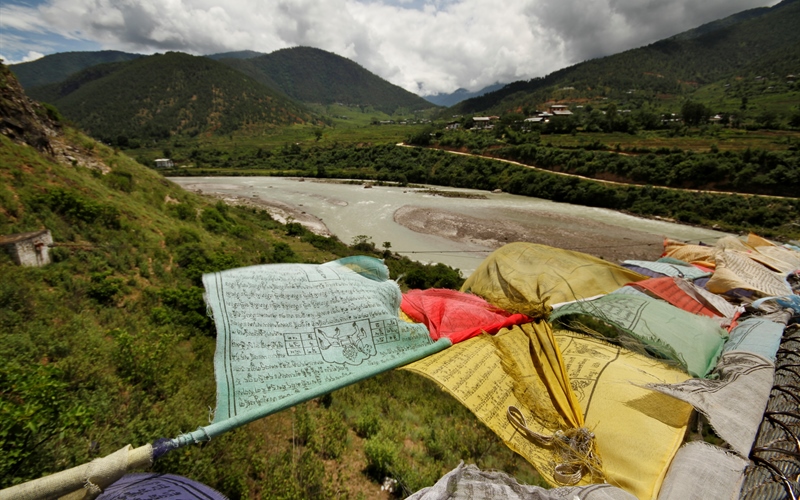
Below the bridge, the crystal-clear turquoise waters of the Phochhu River shimmer under the winter sun, offering a breathtaking sight as it flows gracefully downstream. This pristine river eventually merges with the Mochhu, forming the mighty Punatshangchhu. However, with the arrival of summer and the monsoon rains, the once-transparent waters of the Phochhu turn a murky brown, carrying silt and debris from the mountains. The river, swollen and turbulent, contrasts sharply with its serene winter appearance, reflecting the seasonal rhythms of nature.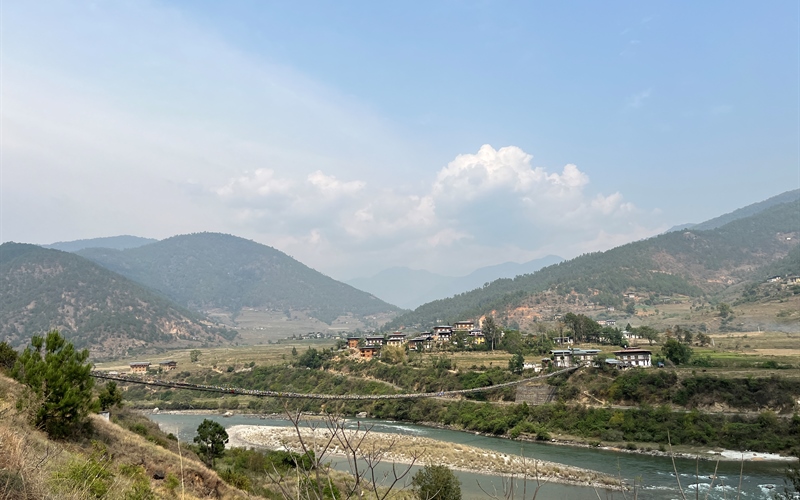
Improved Facilities for Visitors
Unlike in the past, when there were no toilets, resting areas, or restaurants near the bridge often forcing people to rush into the nearby bushes to relieve themselves but things have significantly improved in recent years.
A cluster of businesses has sprung up on the other side of the bridge, catering to the needs of visitors and travelers. These establishments not only provide food and refreshments but also offer restroom facilities free of charge, making the area more convenient and welcoming for everyone.
Accessing the Suspension Bridge
From the Mochhu parking lot, which marks the entrance to the Punakha Dzong, it’s a brief drive of less than five minutes to the end of the road, where the bridge is located. This area also serves as a parking spot for vehicles of those coming to the nearby cremation ground. To reach the bridge, visitors must pass by the cremation ground before continuing along the path.
The hike to the suspension bridge, though relatively short, can be quite challenging, especially during the summer months. The trail, which takes about 5 to 10 minutes to walk, becomes muddy and slippery, making it difficult to navigate, particularly after rainfall.
In contrast, the winter season offers a more pleasant hiking experience, with the cooler temperatures and dry weather improving the trail conditions. However, during this time, the path can become a bit dusty. Despite the conditions, the winter hike remains more manageable, offering a comfortable stroll with scenic views along the way before you are welcomed by the sight of Bhutan’s longest suspension bridge, a stunning structure that offers both a sense of adventure and a breathtaking view of the surrounding valley.
There are, however, plans to enhance the trail to the suspension bridge by constructing steps that will extend all the way to the bridge. This improvement is aimed at making the short journey more comfortable and accessible for tourists, especially those who may find the current muddy or dusty path challenging.
Additionally, the plans include the building of restrooms near the bridge, further enhancing the convenience and overall experience for visitors, making it a more enjoyable and seamless adventure.
Safety Guidelines for Crossing the Bridge
Crossing the suspension bridge requires a bit of caution, as there are important safety guidelines to follow. At both ends of the bridge, you'll find notice boards displaying a list of do's and don'ts. These guidelines are there to ensure the safety of visitors, as the bridge can sway in the wind, and the narrow walkway requires careful navigation. By following the instructions, visitors can enjoy the experience safely while respecting the integrity of the structure.
DeSuups (Guardians of Peace) have been stationed near the suspension bridge to provide support and ensure safety in the area. Their deployment is likely aimed at assisting with crowd management, maintaining order, and responding to any potential emergencies.


